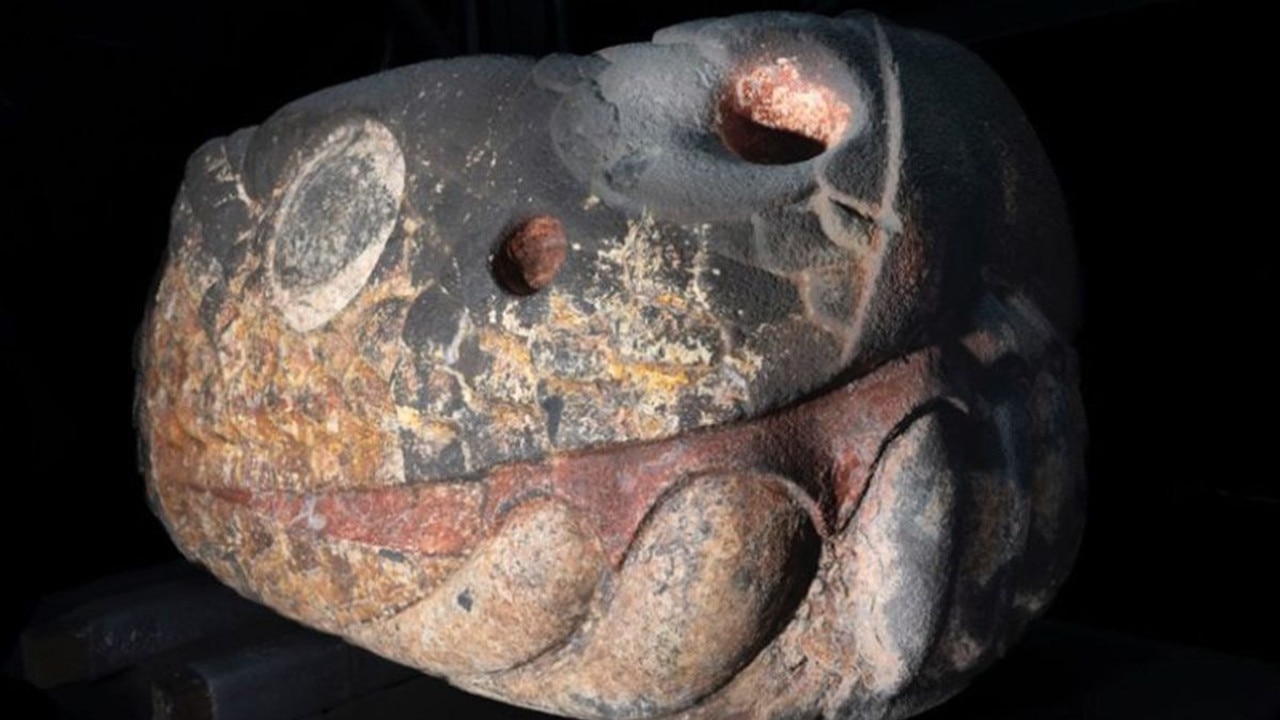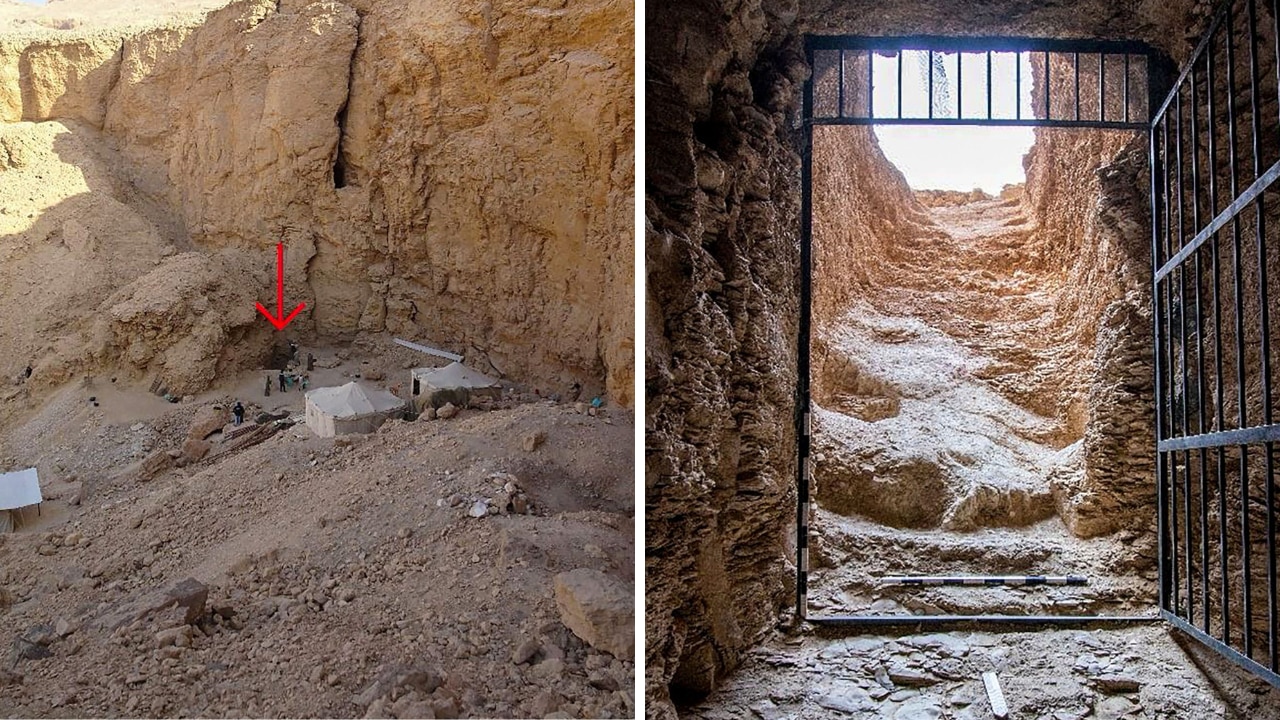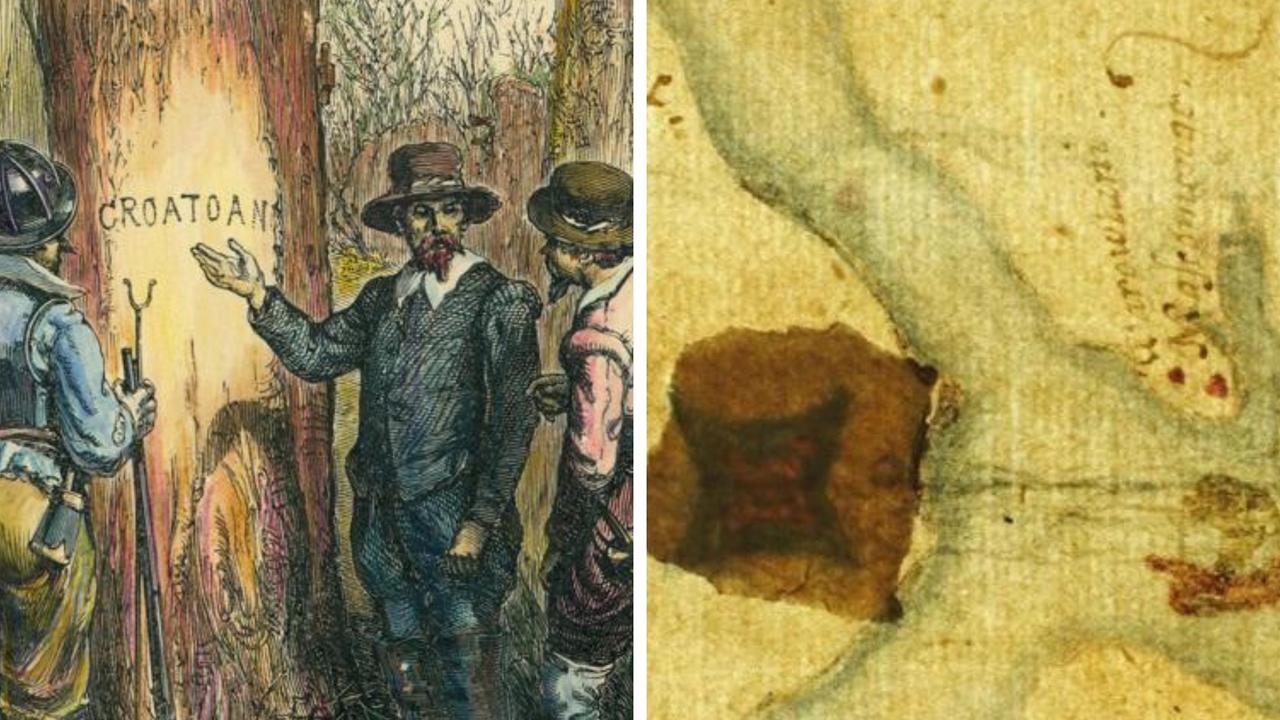500yo Aztec snake head statue unearthed in Mexico earthquake
A giant, colourful statue of a snake’s head from the Aztec empire has been shaken free after an earthquake in Mexico.

A giant, colourful statue of a snake’s head from the Aztec empire has been revealed to the public after an earthquake in Mexico shook it free last year.
The huge sculpture, which dates back more than 500 years, was unearthed from beneath a law school in modern-day Mexico City, which was once part of Tenochtitlan, the capital of the Aztec empire.
It was discovered after a magnitude-7.6 earthquake hit the city on September 19 last year, causing damage to parts of the National Autonomous University of Mexico.
The snake’s head has now been shown to the public for the first time.


The huge, stunning snake’s head is 1.8 metres long, one metre high and 0.85 metres wide, and weighs about 1200 kilos, Mexico’s National Institute of Anthropology and History (INAH) said in a statement in Spanish.
Perhaps most striking is its beautifully preserved colours, with about 80 per cent of the paint on the sculpture — including red, blue, black and white colours — still visible.
To keep it preserved, an INAH team lifted the snake’s head out of the ground with a crane and constructed a humidity chamber around it. The chamber allowed the sculpture to lose humidity gradually, with its colour being preserved, María Barajas Rocha, a conservationist with the INAH, said.


Erika Robles Cortés, an archaeologist with the INAH, said the sculpture’s colours helped to shed new light on pre-Hispanic art.
“Thanks to the context in which this piece was discovered, but above all, thanks to the stupendous intervention of the restorers-conservators led by María Barajas, it has been possible to stabilise the colours for its preservation in almost all the sculpture, which is extremely important, because the colours have helped us to conceive pre-Hispanic art from another perspective,” he told LiveScience.
The Aztecs worshipped and built temples in honour of a number of deities, including Quetzalcoatl, a god that was often depicted as a feathered serpent. It’s unclear whether this snake’s head depicts him, archaeologists involved in the project said.






